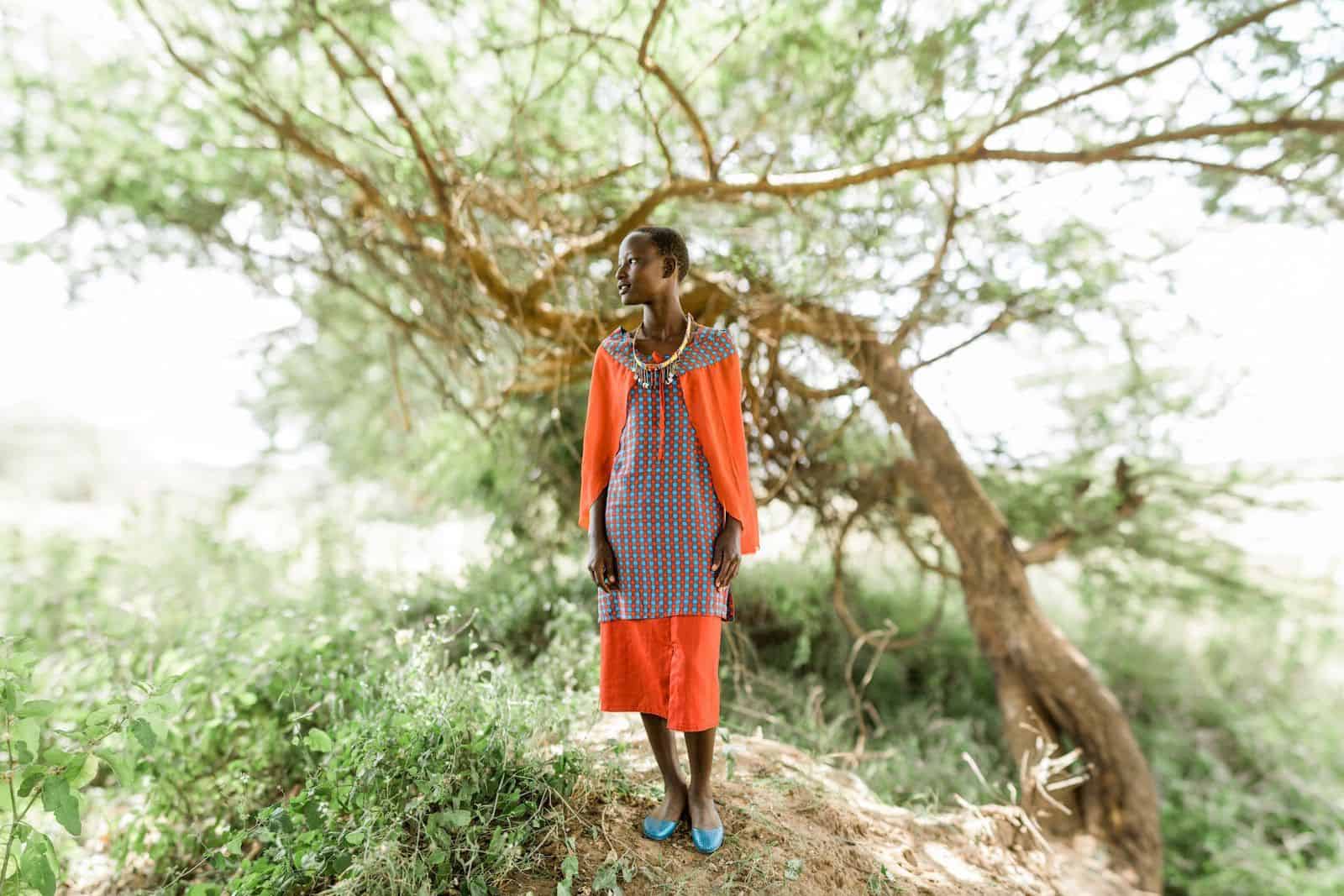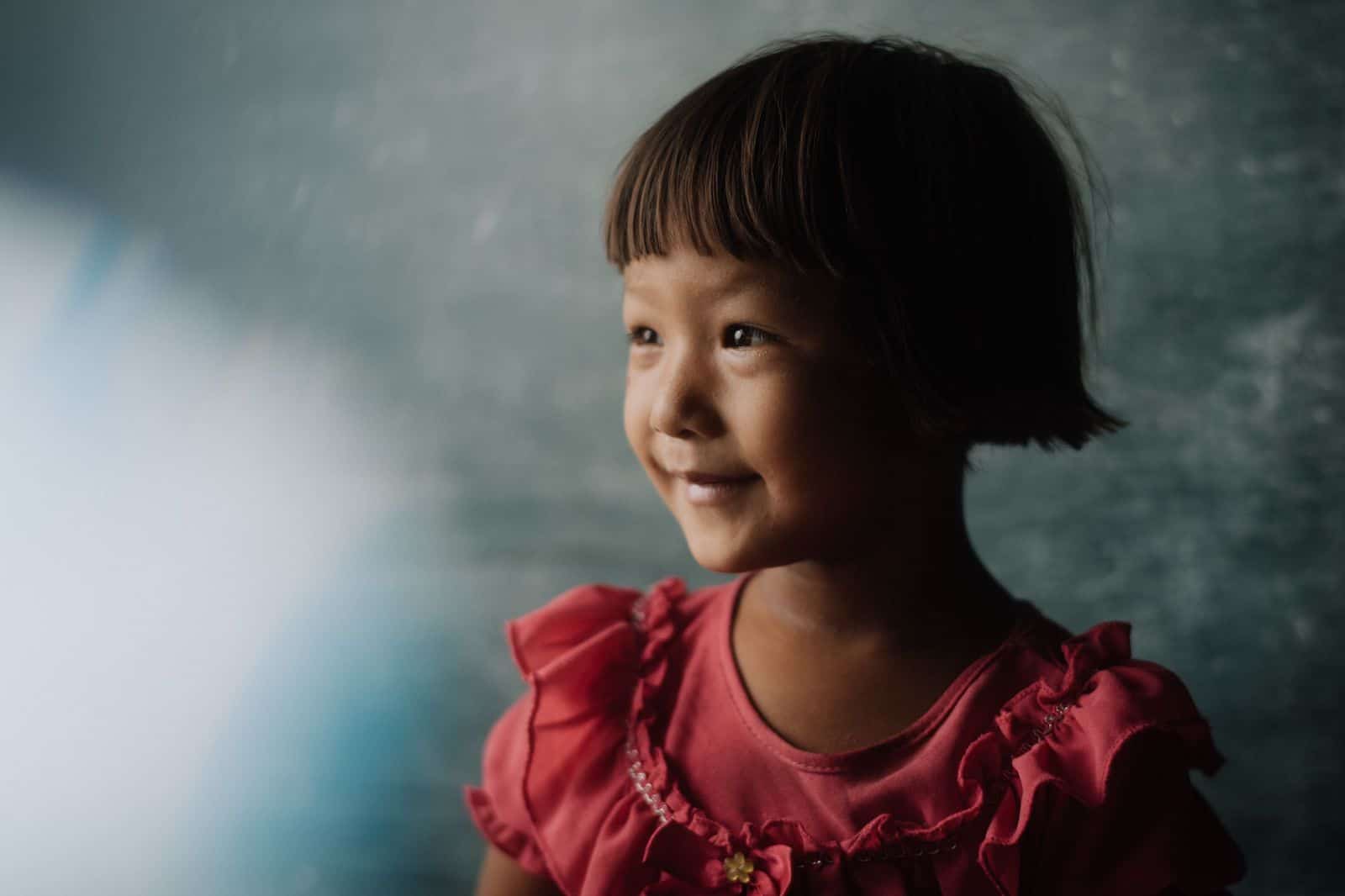The fashion industry can have a profound impact on people living in poverty, so at Compassion, ethical fashion is close to our hearts. But understanding how to shop ethically can be overwhelming. Molly Stillman is a Christian blogger and Compassion supporter who has a passionate heart for ethical fashion. We asked her to share her expertise with us on how we can help people in poverty in the way we shop!

How Fast Fashion Has Changed What You Wear
My dad was born the day before D-Day, on June 5, 1944. I have had a few conversations with him over the years about all that has changed in the nearly 76 years he’s been alive, from cars to technology to media. While some things you could say are a big improvement over time, other things I’m not so sure. One of those would be the fashion industry.
Let’s think back to the 1940s, ’50s and ’60s. During that time, the average person purchased fewer than 25 garments of clothing a year. There were four seasons of clothing: fall, winter, spring and summer. When a zipper broke? You fixed it. When you lost a button? You replaced it. When you got a hole in your pants, you patched it. Clothing was made, purchased and worn to last. Simply put, people weren’t buying new things all the time. Here in the United States, about 95% of clothing that was worn was manufactured in our country.
Sometime in the late 1980s and early 1990s, that mentality began to change. Over time, brands began to release not four seasons of clothing, but 52 seasons of clothing. Yes, that is new clothing every single week.
Then in 1994, the North American Free Trade Agreement came into effect. That was the catalyst that created an outflux of the production of our clothing leaving the United States. This had a huge impact. Whereas 95% of our clothing was made in the United States previously, now about 98% of our clothing is made overseas.
With the increase in the amount of clothing that was being manufactured and marketed, and with the manufacturing primarily being done overseas to cut costs, this created a cycle that increased demand for fast, cheap fashion.
Why Does the Change to the Fashion Industry Matter?

Cheap, fast fashion comes at a price to the people who make it and the environment that it’s made in. Let me break it down for you a little bit. You buy a pair of jeans for $20 from a popular retail store. Here’s what went into making those jeans:
- The cotton has to be grown.
- It then has to be picked and ginned.
- Once ginned, it is shipped overseas to a factory that mills the cotton and turns it into fabric.
- Then the denim has to be dyed.
- Next the denim has to be cut, sewn and sized. Buttons, rivets, zippers and distressing are added (also gotta think about where the buttons and zippers are coming from).
- Then the jeans are packaged and shipped back to the U.S. to one or more distribution facilities.
- Next the jeans are shipped to a retail store.
- Finally an employee puts the jeans out at a retail store for you to buy.
If you paid $20 for a pair of jeans that went through all of that, how was everyone in the supply chain paid a fair or living wage? It’s just not possible.
The global retail apparel industry is worth over $1.78 trillion worldwide, but 80% of workers in the garment industry are women living in poverty. To put it in perspective, the top CEO of a fashion brand earns in just FOUR DAYS what an average garment worker will earn in a lifetime.
Additionally, the fashion industry is rife with child labor. However, because of the complex nature of child labor, true statistics coupled with the inability for many brands to trace child labor in their supply chains, makes eliminating child labor extremely difficult.
The reality is: People and the environment are suffering as a result of the way that fashion is made, sourced and consumed.
How to Find Ethical Fashion Brands

You’re probably thinking: I’m overwhelmed. I don’t even know where to start. There’s hope! You have so much purchasing power as a consumer.
“Every time you spend money, you’re casting a vote for the kind of world you want.” — author Anna Lappe
You can make a big difference just in the way you choose to spend your money! Remember, this is a journey. This is a marathon, not a sprint. Little by little progress really does add up and micro decisions add up to macro changes.
Here are a few tips and questions to determine if a brand is ethical:
Are they a member of the Fair Trade Federation, World Fair Trade Organization, or are they Fair Trade Certified? These have a set of standards and requirements that their member companies must meet. You can pretty much guarantee that if they are a member, this is a company you want to buy from. You can identify a fair trade brand by a logo on their packaging website or marketing materials.
Are they a Certified B Corporation? B Corporation certification (also known as B Lab certification or B Corp certification) is a private certification issued to for-profit companies. To be certified, brands have to receive a minimum score on an online assessment for “social and environmental performance.” If a company is a Certified B Corp, you will see a logo indicating their status at the bottom of their website, on their product packaging or on their marketing materials.
Do they have their Global Organic Textile Standard (GOTS) certification? When you see this certification, it means that their material and fabric are composed of at least 95% organic fibers. When fabrics are produced with organic fibers, it means that the product is much less likely to be causing harm to the environment and to the people involved in the process.
Does the brand market itself as an ethical brand? Here, you have to use your judgment! Some smaller ethical brands choose not to be members of these groups because of the fees involved. These businesses will take the expense they would be putting toward these memberships and certifications and invest it back into their business and their makers.
Are they a small business? When you are supporting a small, locally owned business, you are helping to directly support local families, the local economy, and you’re not directly supporting a larger business that could potentially be using harmful manufacturing and labor practices.
Do they explain their manufacturing practices on their website? Many companies will talk about this, and that is amazing! However, I don’t fault companies that don’t meet this qualification. It may not be something they want to market front and center, even if it is something that is important to their brand. BUT, if you find out that a company does share their manufacturing practice, that is a huge bonus!
ASK! Ask the brand what measures they are taking to make sure their workers are treated fairly. Email them. Call them. Post on social media. You have power as a consumer and can influence brands.
Shop secondhand! There are ways to shop ethically that remove the major fashion retailers all together. Shop at secondhand thrift stores or consignment shops. You can also find these online — one of the most affordable and ethical ways to shop! Host a clothing swap with your friends or shop local yard sales.
Browse my ethical fashion brand directory. In 2015, I was on the hunt for a resource for shopping ethically. When I couldn’t find what I was looking for, I decided to create my own. My ethical fashion directory has over 340 brands from men’s and women’s fashion, home goods, beauty, skin care and so much more!
Why Does Ethical Fashion Matter to Christians?

There are countless examples in the Bible of God calling us to care for the most vulnerable in society: the poor, the widow, the orphan and the worker. That is why it is my belief that we as Christians need to be at the forefront of issues like advocating for fair and living wages in the fashion industry.
Christ has put us where we are to be agents of change. Together, we can make a difference. We just have to work together to make it happen.
Photos by Nico Benalcazar, Jeremy Tan and Galia Oropeza. None of those pictured work in the global fashion industry.








0 Comments |Add a comment